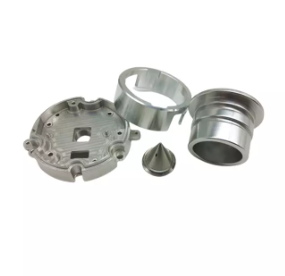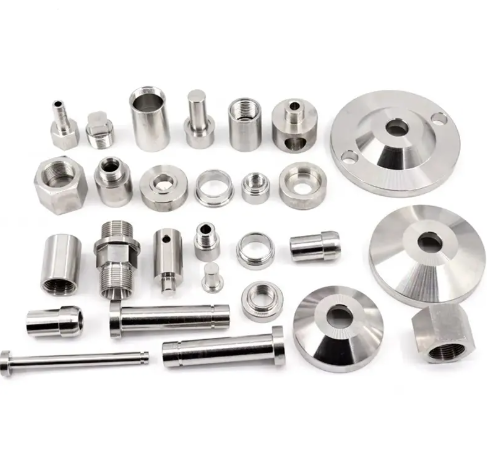Email: admin@yeeshine-tech.com WhatsApp: +86-13712868936
- All
- Product Name
- Product Keyword
- Product Model
- Product Summary
- Product Description
- Multi Field Search


Views: 0 Author: Site Editor Publish Time: 2025-03-17 Origin: Site











Have you ever wondered how the automotive industry produces such precise components so quickly? CNC prototyping is changing the game, offering manufacturers faster, more accurate production. This innovation allows for the creation of intricate automotive parts with less material waste and enhanced precision.
In this post, we’ll explore how CNC machining is transforming the automotive sector. You’ll discover the benefits of CNC prototyping in car manufacturing, and how it improves rapid prototyping in automotive industry with CNC. Learn how precision CNC prototyping for automotive parts is making a significant impact on car component production.
CNC prototyping is a cutting-edge manufacturing method where computer numerical control (CNC) technology guides machinery to produce precise automotive component prototypes from raw materials. Unlike traditional techniques that require manual intervention and face design limitations, CNC prototyping uses CAD/CAM software to transform detailed 3D models into precise machining instructions. This seamless integration allows manufacturers to create highly accurate and intricate automotive parts, ensuring prototypes are ready for testing and validation before large-scale production.
CNC prototyping for automotive components offers several transformative advantages that make it an ideal solution in the modern automotive industry. A major benefit is its ability to speed up production cycles, allowing faster transition from concept to a physical prototype. In a competitive industry like automotive manufacturing, this rapid prototyping capability helps companies gain a time-to-market advantage, ensuring they stay ahead of competitors.
Additionally, precision CNC prototyping for automotive parts ensures that each component is crafted with micron-level accuracy, essential for meeting the stringent quality and safety standards required in the automotive sector. This level of precision is crucial for producing high-performance, reliable automotive parts that function as intended.
The cost-efficiency of CNC prototyping is also a key advantage. While initial setup costs are comparable to traditional manufacturing methods, the long-term savings come from reduced material waste, minimized labor costs, and fewer production errors. CNC prototyping can also work with a wide range of materials, including metals and automotive-specific composites, offering manufacturers flexibility to choose the best material for each application.
Finally, CNC prototyping excels at creating complex automotive components with intricate geometries. Traditional methods struggle with such designs, but CNC machines can perform multi-axis machining, producing parts with advanced features that enhance both the design and functionality of automotive systems. This capability fosters design innovation and ensures the highest quality in the final products.

CNC prototyping for automotive components has become an integral part of modern automotive manufacturing, offering precision and flexibility in producing a variety of vehicle parts.
CNC technology plays a critical role in producing engine components such as cylinder heads, pistons, and valve systems, which require micron-level accuracy for optimal performance and longevity. Through CNC prototyping for automotive parts, manufacturers can test various designs and materials during the early stages of production, allowing them to refine engine efficiency and reliability before moving to large-scale production. This ensures that each engine part meets the rigorous standards required for high-performance vehicles.
The complexity of transmission systems necessitates the highest level of precision, which CNC prototyping readily provides. Key components such as gear shafts, clutch parts, and transmission housings must meet strict tolerances to ensure smooth power transfer and durability. By utilizing CNC machining in automotive production, manufacturers can create high-quality transmission prototypes that meet the automotive industry's demanding performance standards, improving the overall drivetrain system.
CNC prototyping is essential in manufacturing suspension and chassis components that directly impact vehicle stability, safety, and handling. Parts like control arms, steering knuckles, and frame elements require precise manufacturing to maintain structural integrity and meet strict safety regulations. Precision CNC prototyping for automotive parts ensures that these critical components are produced with the necessary accuracy to guarantee reliable performance under diverse driving conditions.
For automotive manufacturers, both interior and exterior components are vital for both functionality and design. CNC prototyping facilitates the production of dashboard elements, door panels, trim pieces, and lighting components, ensuring that these parts fit seamlessly into the vehicle’s overall design. Not only do these parts need to meet safety and ergonomic requirements, but they also contribute to the vehicle's aesthetic appeal. With CNC prototyping, manufacturers can achieve high-quality, consistent components that elevate the user experience.
In the production of high-performance vehicles, CNC prototyping is particularly beneficial for creating customized parts that meet specific needs, whether for racing cars requiring lightweight yet durable components or luxury vehicles needing exquisite craftsmanship. This flexibility extends to the growing demand for specialized parts in electric and autonomous vehicles, where innovative designs and advanced materials are increasingly used. CNC technology enables manufacturers to push the boundaries of automotive design and performance while ensuring precision in every custom component.
The influence of CNC prototyping on the automotive industry becomes evident through practical examples and success stories from leading manufacturers.
Numerous automotive companies have adopted CNC prototyping for automotive components, achieving impressive results. For example, a well-known sports car manufacturer used CNC technology to develop a new engine part, cutting development time by 50% and boosting fuel efficiency by 30%. Similarly, a major electric vehicle producer employed CNC prototyping to refine the design of its battery housing, enhancing energy storage and reducing production costs. These cases demonstrate the clear benefits of CNC prototyping in car manufacturing, showing how it can enhance both performance and cost-efficiency.
Today, many production vehicles feature parts that were initially developed using precision CNC prototyping for automotive parts. CNC technology plays a key role in creating critical engine components like cylinder heads and pistons, improving combustion efficiency and lowering emissions. In transmission systems, CNC prototyped gear shafts and housings ensure smoother shifts and longer-lasting durability. CNC prototyping is also essential for producing perfectly fitted interior parts such as dashboard components and door panels, enhancing the overall driving experience and vehicle design.
CNC prototyping has significantly advanced the development of electric and autonomous vehicles. Manufacturers of electric vehicles rely on CNC prototyping for custom motor components and battery enclosures, which require high precision for optimal performance. This rapid prototyping in the automotive industry with CNC allows for quick design iterations and precise production. For autonomous vehicles, CNC prototyping enables the creation of specialized parts such as sensor housings and hardware for advanced driver-assistance systems (ADAS), speeding up the development process and supporting the integration of cutting-edge technology into vehicles.
The future of CNC prototyping in automotive manufacturing is filled with potential, with emerging technologies set to transform vehicle design and production processes.

The integration of CNC prototyping with AI and machine learning is transforming the automotive manufacturing landscape. CNC systems, powered by AI, can autonomously optimize machining parameters, predict tool wear, and conduct real-time quality checks, minimizing human intervention and enhancing production efficiency. Machine learning algorithms analyze historical data from previous CNC prototyping for automotive components, allowing engineers to refine designs and anticipate manufacturing issues before production begins. This leads to faster and more precise automotive part manufacturing with improved performance and fewer errors.
As material science continues to evolve, new innovations in materials such as high-strength polymers, composites, and advanced alloys are expanding the possibilities of CNC prototyping for automotive components. These materials offer enhanced strength, durability, and lightweight properties, allowing for the creation of fuel-efficient vehicles without sacrificing safety or performance. Along with these advancements, CNC technology is evolving to process these cutting-edge materials more effectively. With improved tools, faster spindle speeds, and enhanced multi-axis capabilities, CNC machining is able to meet the unique demands of each material, improving precision CNC prototyping for automotive parts and expanding design possibilities.
Sustainability is a growing priority in the automotive industry, and CNC prototyping plays a significant role in achieving eco-friendly manufacturing goals. The precision of CNC reduces material waste during prototyping, making the process more resource-efficient. It also allows for the use of recyclable materials, contributing to a more sustainable production cycle. Moreover, CNC prototyping enables the creation of lighter vehicle components, which helps reduce overall vehicle weight, leading to improved fuel efficiency and lower emissions. This technology is essential for producing parts for electric and hybrid vehicles, supporting the shift toward greener, more sustainable transportation solutions.
CNC prototyping is driving major innovation in the automotive industry, enhancing precision and efficiency in manufacturing. By reducing time-to-market and improving product quality, it offers a competitive edge. The future of CNC prototyping in automotive components will be shaped by advances in AI, material science, and sustainability.
CNC prototyping uses computer-controlled machines to create precise automotive parts, offering benefits like high accuracy, faster production, and cost-effectiveness for complex components.
CNC prototyping provides higher precision, strength, and material versatility, making it ideal for functional parts, while 3D printing is better for rapid, intricate, non-functional prototypes.
CNC prototyping works with a variety of materials, including metals (aluminum, steel), plastics (ABS, polycarbonate), and advanced composites like carbon fiber, offering flexibility in part design.
CNC prototyping accelerates EV development by enabling fast iteration of components like battery housings, motor parts, and lightweight designs that improve energy efficiency and range.
The future of CNC prototyping in automotive manufacturing looks bright with advancements in AI, material science, and sustainability, supporting innovation in electric and autonomous vehicles.
content is empty!
content is empty!